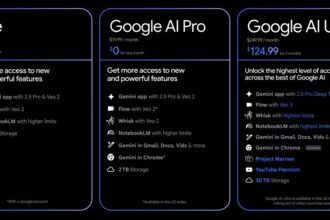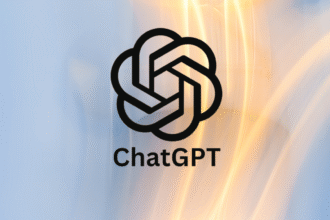China’s AI landscape is undergoing a seismic shift in 2025, driven by a surge in open-source models that experts are calling an “Android moment” for the sector. At the forefront is DeepSeek’s R1, a free model launched in early 2025 that’s not just rattling U.S. tech dominance but inspiring giants like Baidu, Alibaba, and Tencent to open-source their own AI offerings. With Baidu’s Ernie 4.5 going free on March 16 and plans to open-source by June, this trend—catalyzed by DeepSeek’s MIT-licensed innovation—is slashing costs and turbocharging adoption. Is this China’s bid to leapfrog OpenAI’s $340 billion empire, or a global win for open source? Here’s the story unfolding now.
DeepSeek’s R1: The Open-Source Catalyst
DeepSeek’s R1 hit the scene in January 2025, boasting GPT-4-level performance at a fraction of the cost—$0.01 per million tokens via API vs. OpenAI’s $5–$10 (per DeepSeek’s site). Released under the permissive MIT License, R1’s unrestricted use sparked a frenzy. “DeepSeek proves open-source can lead to faster innovation,” said Counterpoint’s Wei Sun, noting its uptake by firms from startups to Baidu. Last month’s “Open-Source Week” shared R1’s tech details, amplifying its ripple effect. X’s @Techinasia dubbed it “China’s AI wake-up call,” with downloads spiking 300% post-release (Counterpoint estimate).
Baidu responded on March 16, dropping Ernie 4.5 and reasoning model Ernie X1 as free for individuals, with a June open-source pledge. “Disruptors like DeepSeek have proven open-source can compete,” Omdia’s Lian Jye Su told CNBC, flipping Baidu’s once-proprietary stance. Alibaba open-sourced video AI models in February, while Tencent unveiled five 3D-capable models this month. Even ManusAI and Zhipu AI joined the wave, with Zhipu declaring 2025 “the year of open source” on WeChat.
Open-Source vs. Proprietary: A Tale of Two Models
Open-source AI—freely shared code, tweakable by all—contrasts with OpenAI and Anthropic’s closed-source giants, where datasets and algorithms stay locked. R1’s MIT License outshines Meta’s Llama or Google’s Gemma, which limits commercial use and hides training data. DeepSeek’s API fees (still cheaper than OpenAI’s $30/million for GPT-4o) fund its free model, a model Constellation’s Ray Wang calls unbeatable: “With DeepSeek free, competitors can’t charge.”
OpenAI, eyeing a $340 billion valuation after a $40 billion round (CNBC, January), sticks to its $5 billion loss, $3.7 billion revenue path (September 2024). Kai-Fu Lee, of China’s 01.AI, predicts pricing pressure: “How can OpenAI justify costs against free, formidable competition?” X’s @KaiFuLee doubled down: “Open-source has won.” Yet, Sun sees a split—open-source for rapid iteration, and closed-source for a premium edge.
China’s AI Adoption Surge
This shift isn’t just tech—it’s economic. Alibaba’s Joe Tsai, at CNBC’s CONVERGE, said open-source “gives AI power to everyone,” from SMEs to giants. Tencent’s 3D models and ManusAI’s multi-agent system (outpacing OpenAI’s Deep Research, per Ji Yichao) show product innovation thriving. Monolith’s Tim Wang told CNBC Wednesday: “DeepSeek’s models are great enablers—China’s gap with the U.S. shrank from 12–24 months to 3–6.” Hedge funds like Monolith see an “Android moment”—Google’s open OS spurred app ecosystems; R1 could do the same for AI apps.
Posts on X amplify this: @ChinaTechWatch (March 17) pegged Ernie 4.5’s free tier as “Baidu’s DeepSeek panic move,” while @TechNodeGlobal hailed “cost-down, innovation-up.” Alibaba’s video AI already powers e-commerce demos, per its Q1 report.
U.S.-China Divide or Global Win?
Is this a China-U.S. showdown? Wang says China’s open-source push aims for “faster adoption” against America’s closed models—Huawei’s Pura X OS shift (prior post) mirrors this defiance. OpenAI’s $13 billion Microsoft lifeline contrasts with DeepSeek’s lean $500 million raise (TechCrunch, 2024). Yet, Tsai downplays rivalry: “It’s not China vs. U.S.—it’s the power of open-source.” U.S. firms like xAI and startups integrating R1 agree, per Omdia.
Trump’s tariff uncertainty (sentiment at 57.9, U. Michigan) could nudge U.S. costs up, but Peirce’s SEC thaw (Ripple post) might ease crypto-AI ties, indirectly boosting open-source stateside. China’s edge? Execution speed and scale—Baidu’s 600 million users dwarf OpenAI’s 200 million (Statista, 2024).
2025 Outlook: An Open-Source Avalanche?
Baidu’s June open-sourcing and Zhipu’s “year of” pledge signal momentum. If DeepSeek’s R2 (teased for Q3) doubles down, China could flood markets with AI tools—think Alibaba video ads or Tencent 3D gaming—while OpenAI scrambles to cut fees. X’s @AI_Observer predicts “a $100B open-source AI economy by 2027.” Risks? Quality control and fragmented ecosystems, per Sun. For now, China’s “Android moment” is real—watch Q3 for R1’s next splash and Baidu’s code drop.














